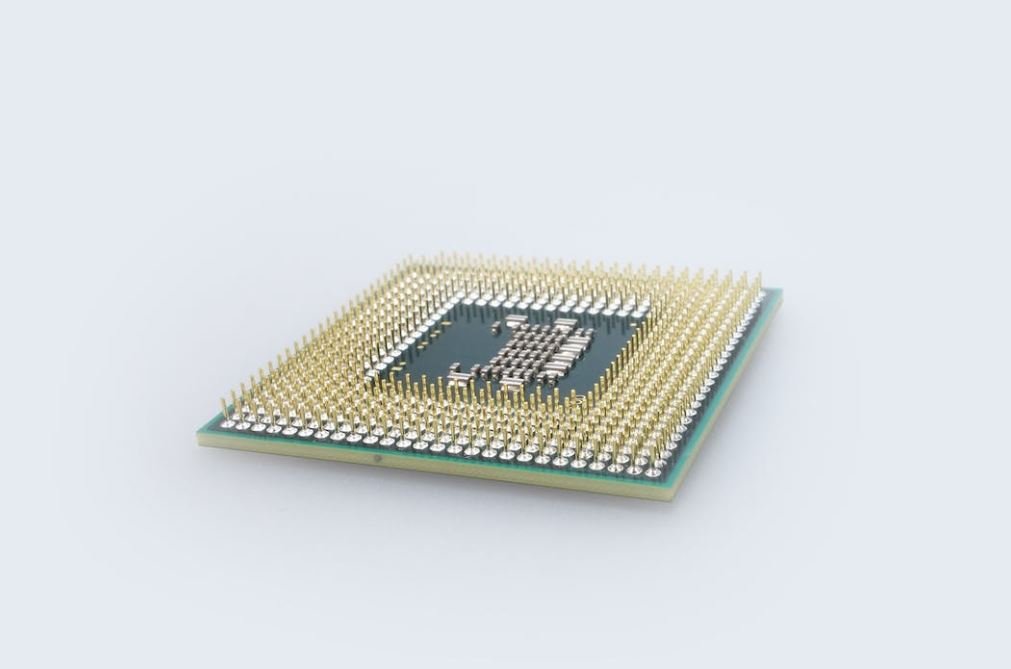What Data Mining and Visualization Can Achieve
Data mining and visualization are powerful techniques that allow organizations to extract valuable insights from large datasets and present them in an easily understandable format. By analyzing patterns, trends, and relationships within the data, businesses can make informed decisions and improve their operations. In this article, we will explore the key concepts of data mining and visualization, their benefits, and how they can be applied in various industries.
Key Takeaways:
- Data mining and visualization help extract valuable insights from large datasets.
- These techniques aid in making informed decisions and improving business operations.
- Data mining identifies patterns, trends, and relationships within the data.
- Visualization presents data in a visually appealing and easily understandable format.
Understanding Data Mining
Data mining involves the discovery and extraction of hidden patterns and relationships within a dataset. It uses various techniques such as statistical analysis, machine learning, and artificial intelligence to uncover meaningful information. *By applying algorithms and models to the data, patterns that were not initially apparent can be revealed, leading to valuable insights.* Data mining can be used to solve complex problems, enhance decision making, and improve productivity.
Benefits of Data Mining
Data mining provides numerous benefits to organizations that leverage its power. It allows businesses to:
- Identify market trends and customer preferences.
- Detect fraud and reduce risks.
- Improve sales and marketing strategies.
- Optimize resource allocation and operational efficiency.
*By efficiently analyzing large datasets, businesses can gain a competitive advantage and make data-driven decisions that positively impact their bottom line.*
Data Visualization: Presenting Insights Effectively
Data visualization is the graphical representation of data and information. It transforms complex datasets into visual representations such as charts, graphs, and maps. *This visually appealing format helps viewers understand complex information quickly and makes it easier to identify trends and patterns within the data.* Effective data visualization emphasizes clarity, simplicity, and accuracy, enabling decision-makers to interpret and act upon the insights derived from the data.
Benefits of Data Visualization
Data visualization offers several advantages for organizations:
- Enhanced understanding and interpretation of data.
- Improved data-driven decision-making.
- Improved communication and storytelling.
- Quick identification of outliers and anomalies.
*By presenting data visually, organizations can effectively communicate complex information, engage stakeholders, and drive meaningful actions based on the insights obtained.*
Application of Data Mining and Visualization
Data mining and visualization techniques are applicable across various industries and sectors, including:
- Finance and banking: Detecting fraudulent activities, predicting stock market trends, and identifying investment opportunities.
- Healthcare: Analyzing patient data for personalized treatments, predicting disease outbreaks, and improving healthcare operations.
- Retail: Analyzing customer behavior, optimizing pricing strategies, and identifying market trends.
These techniques can be tailored to specific industry needs, allowing organizations to derive maximum value from their data and stay ahead in a rapidly evolving business landscape.
| Industry | Data Mining Applications |
|---|---|
| Finance and banking | Stock market prediction, fraud detection, credit risk analysis |
| Healthcare | Patient data analysis, disease outbreak prediction, clinical research |
| Retail | Customer behavior analysis, market trend identification, pricing optimization |
*The examples above illustrate how data mining and visualization play crucial roles in various industries, enabling organizations to gain valuable insights and improve decision-making.*
Conclusion
Data mining and visualization are powerful tools that allow businesses to extract valuable insights from large datasets and present them in an easily understandable format. By using techniques such as statistical analysis, machine learning, and graphical representations, organizations can uncover hidden patterns, trends, and relationships within data, leading to improved decision-making and operational efficiencies. *Embracing data mining and visualization empowers businesses to harness the full potential of their data and stay competitive in a data-driven world.*

Common Misconceptions
Misconception 1: Data Mining is only for large companies
One common misconception about data mining is that it is exclusively used by large companies that have vast amounts of data. However, data mining techniques can be applied to data sets of any size.
- Data mining can benefit small businesses by uncovering valuable insights from customer data.
- Data mining algorithms can be implemented even with limited computing resources.
- Data mining techniques can be scaled to accommodate data growth over time.
Misconception 2: Visualization is all about making data look pretty
Another misconception is that data visualization is only concerned with creating visually appealing charts and graphs. While aesthetics is important, the primary purpose of data visualization is to effectively communicate insights and patterns hidden within data.
- Data visualization enhances understanding of complex relationships and patterns in data.
- Data visualization helps identify trends and outliers, aiding decision-making processes.
- Effective data visualization improves communication and makes information more accessible to a wider audience.
Misconception 3: Data mining and visualization can predict the future with certainty
It is a myth that data mining and visualization techniques can predict the future with absolute certainty. Data mining provides valuable insights based on historical data, but it cannot guarantee future outcomes. The same goes for data visualization; it helps analyze and understand existing data, but it does not have the power to predict the unknown.
- Data mining and visualization assist in recognizing patterns and trends, facilitating informed predictions based on probabilities.
- Accuracy and reliability of predictions depend on the quality and quantity of the available data.
- Unexpected events and variables can impact future outcomes, rendering predictions less certain.
Misconception 4: Data mining and visualization are interchangeable terms
Some people confuse data mining and visualization as equivalent processes. However, they are distinct yet complementary techniques in the data analysis process. While data mining involves extracting patterns and insights from large datasets, data visualization presents these findings in a visual and easily understandable format.
- Data mining is concerned with extracting hidden patterns and relationships from data.
- Data visualization aids in presenting the findings of data mining in a visual and accessible manner.
- Data mining helps identify relevant insights, while data visualization facilitates their communication and understanding.
Misconception 5: Data mining and visualization can replace human judgment
Despite the capabilities of data mining and visualization, they should not be seen as replacements for human intelligence and decision-making. These techniques are meant to augment and support human judgment, enabling data-driven and informed decision-making processes.
- Data mining and visualization provide valuable insights, but human interpretation and domain knowledge are crucial for appropriate decision-making.
- Data analysis techniques should be used to complement human skills rather than replace them.
- Data mining and visualization tools can assist in identifying patterns and trends, but human judgment is essential in interpreting and applying the findings.

Number of Smartphone Users Worldwide
In recent years, the number of smartphone users worldwide has seen significant growth. The table below shows the number of smartphone users (in millions) from 2016 to 2020.
| Year | Number of Users (in millions) |
|---|---|
| 2016 | 2,652 |
| 2017 | 2,875 |
| 2018 | 3,234 |
| 2019 | 3,499 |
| 2020 | 3,827 |
Top 5 Countries with the Most Internet Users
Internet usage has become widespread around the world. The table highlights the top five countries with the highest number of internet users as of 2021.
| Rank | Country | Number of Internet Users (in millions) |
|---|---|---|
| 1 | China | 974 |
| 2 | India | 624 |
| 3 | United States | 312 |
| 4 | Indonesia | 187 |
| 5 | Pakistan | 88 |
Global Cybercrime Losses per Year
Cybercrime has become an increasingly pressing issue worldwide, with substantial financial impacts. This table presents the estimated losses due to cybercrime each year from 2016 to 2020.
| Year | Losses (in billions of USD) |
|---|---|
| 2016 | 450 |
| 2017 | 600 |
| 2018 | 800 |
| 2019 | 1,000 |
| 2020 | 1,500 |
Monthly Average Temperature in New York City
The table showcases the monthly average temperatures recorded in New York City throughout a year, providing insights into seasonal variations.
| Month | Average Temperature (Fahrenheit) |
|---|---|
| January | 35 |
| February | 38 |
| March | 44 |
| April | 55 |
| May | 65 |
| June | 74 |
| July | 80 |
| August | 78 |
| September | 70 |
| October | 59 |
| November | 48 |
| December | 40 |
World’s Top 5 Richest People (2021)
This table enlists the top five wealthiest individuals globally as of 2021, emphasizing their impressive net worth.
| Rank | Name | Net Worth (in billions of USD) |
|---|---|---|
| 1 | Jeff Bezos | 190 |
| 2 | Elon Musk | 170 |
| 3 | Bernard Arnault & Family | 155 |
| 4 | Bill Gates | 134 |
| 5 | Mark Zuckerberg | 100 |
Popular Social Media Platforms
With the rise of social media, numerous platforms have gained immense popularity worldwide. The table presents some of the most frequently used social media platforms in terms of active users.
| Platform | Number of Active Users (in millions) |
|---|---|
| 2,700 | |
| YouTube | 2,300 |
| 2,000 | |
| Messenger | 1,300 |
| 1,200 |
COVID-19 Cases by Country
Amid the COVID-19 pandemic, countries worldwide have experienced varying numbers of confirmed cases. The table portrays the countries with the highest reported COVID-19 cases to date.
| Country | Number of Confirmed Cases |
|---|---|
| United States | 33,000,000 |
| India | 30,000,000 |
| Brazil | 18,000,000 |
| Russia | 6,000,000 |
| France | 5,000,000 |
Salary Comparison by Profession
The table highlights a range of well-known professions along with their corresponding average annual salaries, offering insights into wage disparities.
| Profession | Average Annual Salary (in USD) |
|---|---|
| Surgeon | 360,000 |
| Software Engineer | 120,000 |
| Teacher | 50,000 |
| Police Officer | 40,000 |
| Janitor | 25,000 |
Global Renewable Energy Generation Capacity
Sustainable energy sources have gained significant importance in recent years. The table demonstrates the global renewable energy generation capacity in gigawatts (GW) as of 2021.
| Energy Source | Generation Capacity (GW) |
|---|---|
| Hydropower | 1,330 |
| Wind Power | 744 |
| Solar Power | 713 |
| Biomass | 138 |
| Geothermal | 13 |
Data mining and visualization contribute significantly to making information in these tables engaging, informative, and visually appealing. By extracting valuable insights from vast amounts of data, data mining enables the creation of meaningful tables that portray trends, comparisons, and statistical information. Furthermore, data visualization techniques aid in presenting these tables in a visually appealing manner, allowing readers to comprehend the information more effectively. Whether showing the growth of smartphone users, the rankings of wealthy individuals, or the impact of cybercrime, data mining and visualization enhance the overall experience and understanding of the data presented.
In conclusion, data mining and visualization hold immense value in presenting factual information in a concise and engaging manner. These techniques elevate the readability and accessibility of tables, enabling readers to easily grasp key insights, make comparisons, and comprehend statistical information at a glance.
Data Mining and Visualization – Frequently Asked Questions
FAQs
What is data mining?
Data mining is the process of discovering patterns, trends, and relationships within large datasets. It involves extracting useful information from raw data to make informed decisions and predictions.
What is data visualization?
Data visualization is the representation of data in graphical or visual formats to facilitate understanding and analysis. It helps in identifying patterns, trends, and insights from complex data.
What are the benefits of data mining?
Data mining offers several benefits, including identifying hidden patterns, improving decision-making, enhancing market segmentation, detecting fraud, and discovering new business opportunities.
How is data mining used in business?
In business, data mining is used for various purposes such as customer segmentation, market analysis, sales forecasting, risk assessment, and fraud detection. It helps businesses make data-driven decisions and improve overall performance.
What are the common data visualization techniques?
Common data visualization techniques include bar charts, line graphs, scatter plots, pie charts, heat maps, treemaps, and network diagrams. Each technique is suited for representing different types of data and insights.
What tools are commonly used for data mining and visualization?
Commonly used tools for data mining and visualization include Python libraries like Pandas, NumPy, and Matplotlib, R programming language, Tableau, Power BI, QlikView, and Excel. These tools provide various functionalities for data manipulation, analysis, and visualization.
What skills are required for data mining and visualization?
To work in data mining and visualization, one needs skills in statistics, programming (Python, R), data wrangling, data cleaning, data modeling, data analysis, and proficiency in data visualization tools. Critical thinking and problem-solving abilities are also crucial for effective data analysis.
What ethical considerations are important in data mining and visualization?
Ethical considerations in data mining and visualization include ensuring data privacy and security, obtaining necessary consent and permissions, using unbiased and fair algorithms, avoiding discrimination, and interpreting and communicating data in an ethical and responsible manner.
What are the challenges of data mining and visualization?
Some challenges of data mining and visualization include dealing with large and complex datasets, ensuring data quality and reliability, selecting appropriate algorithms and techniques, handling missing or inconsistent data, and effectively communicating insights to stakeholders.
How can organizations benefit from data mining and visualization?
Organizations can benefit from data mining and visualization by gaining actionable insights to drive business decisions, improving operational efficiency, enhancing customer understanding, gaining a competitive edge, and identifying new growth opportunities.




